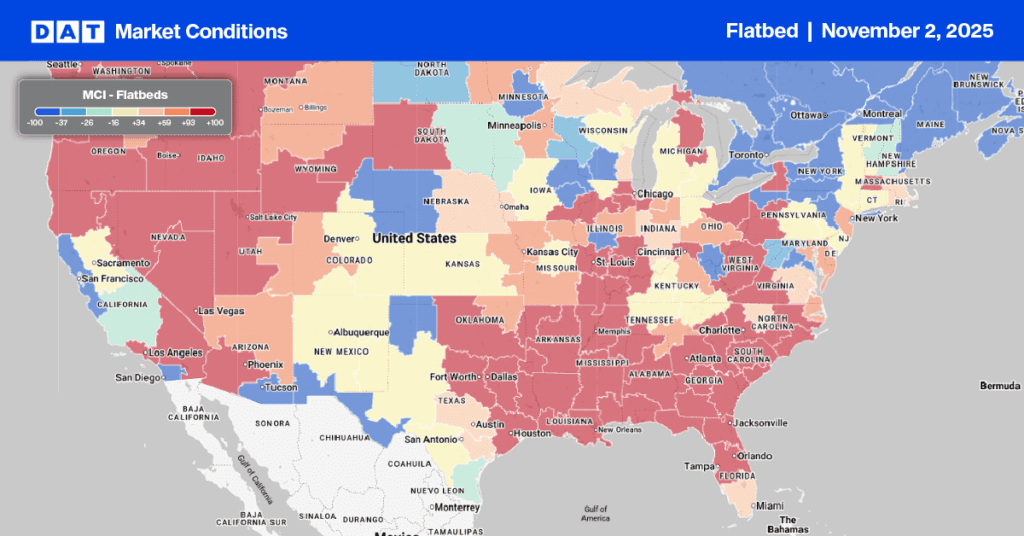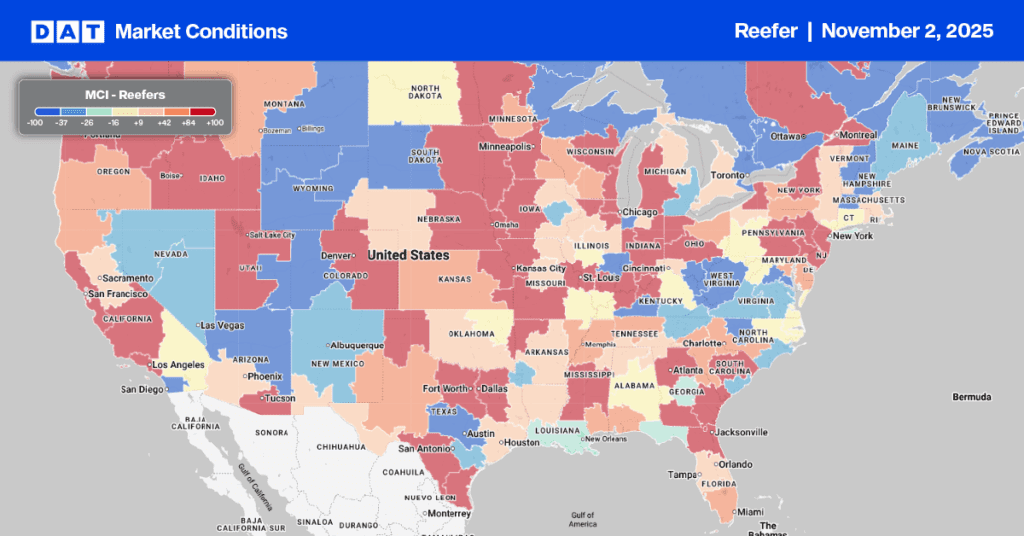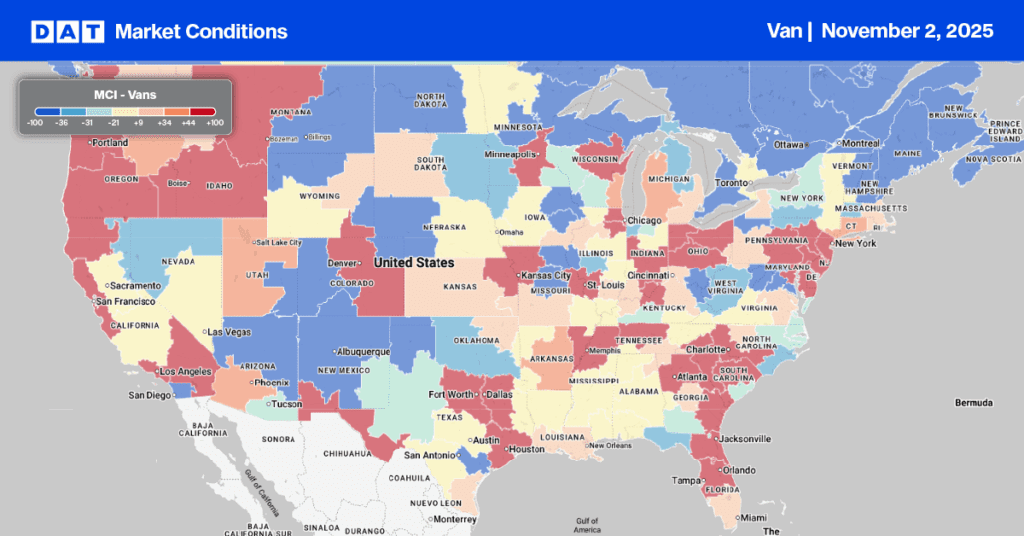Last week’s oil spill off the coast of Los Angeles is another example of what we’ve been experiencing since the pandemic began — one disruption after another. At DAT Freight & Analytics, we’ve termed this effect the “domino economy.”
From the moment the World Health Organization (WHO) declared a global pandemic on March 11, 2020, supply chains across the world have been stressed. Most have failed in the face of historic levels of demand.
Fast forward to the peak-shipping season in the U.S., consumers plan to spend an all-time high $10.14 billion on Halloween-related items.
We now have 63 container ships with close to 450,000 shipping containers loaded with imported goods waiting an average of 10.7 days to unload (and climbing) on the West Coast. Some smaller vessels wait as long as 4 weeks!
Large retailers, including Walmart, Target and Home Depot, and third-party logistics firms have been chartering their own ships. They hope to bypass supply chain problems and ensure goods are delivered in time for the upcoming holiday season.
“The supply chain situation the world finds itself in has never been seen before, even when taking the Great Depression into account,” says Michael Zommerman, partner at global consulting firm Kearney.
What does all this mean for the trucking industry?
Paccar Inc., makers of Kenworth, Peterbilt and DAF trucks, delivered 7,000 fewer trucks in the third quarter due to the global semiconductor chip shortage. Further, Paccar had to lay off 350 workers at their Ohio manufacturing plant last week.
At the national level and at a time when Class 8 truck order books open, net new orders for new trucks dropped 29% in September as OEM’s struggled to build leftover 2021 orders before taking on 2022 orders.
“This is a complicated, bizarre situation that OEMs have never before encountered,” notes industry expert Don Ake, vice president of Commercial Vehicles at FTR. “There are many orders that were expected to be built in 2021 that cannot be completed due to the severe component shortages, most notedly, semiconductors.”
For carriers, this has translated into used truck prices almost doubling in 12-months and longer trade cycles for existing trucks. Used and existing trucks come with higher operating costs, especially on the maintenance side.
It also means less cars and parts for carriers to haul in the automotive sector — and so the domino effect continues.
Even the effects of the polar vortex last February are still impacting supply chains. We’re currently facing a shortage of high-grade commercial engine oil, because the chemical plants that manufactured the oil were offline for several weeks seven months ago.
If all that’s not bad enough, the trucking industry needs approximately 25,000 more drivers in the truckload and LTL sectors to be on par with where we were in 2018.
What do we think the market will look like early in 2022?
The freight economy is heading into the fourth quarter with no signs of slowing down. According to Schneider National CEO Mark Rourke:
“At this juncture, we’re in for several more quarters of where we’re at. The U.S. is a sophisticated, mature, and efficient supply chain that’s really been turned on its ear in the last four quarters and unfortunately, I think we’re in the same place and we’re going to be here for a while.”
We expect record-high spot rates and volumes will continue well into the new year because of the combined effect of:
- Fewer trucks being built
- Lower inventory of available used trucks
- Drivers in short supply
- Growing demand amidst unprecedented supply chain disruptions
As always, plan for the worst, expect the best but be prepared to be surprised.


